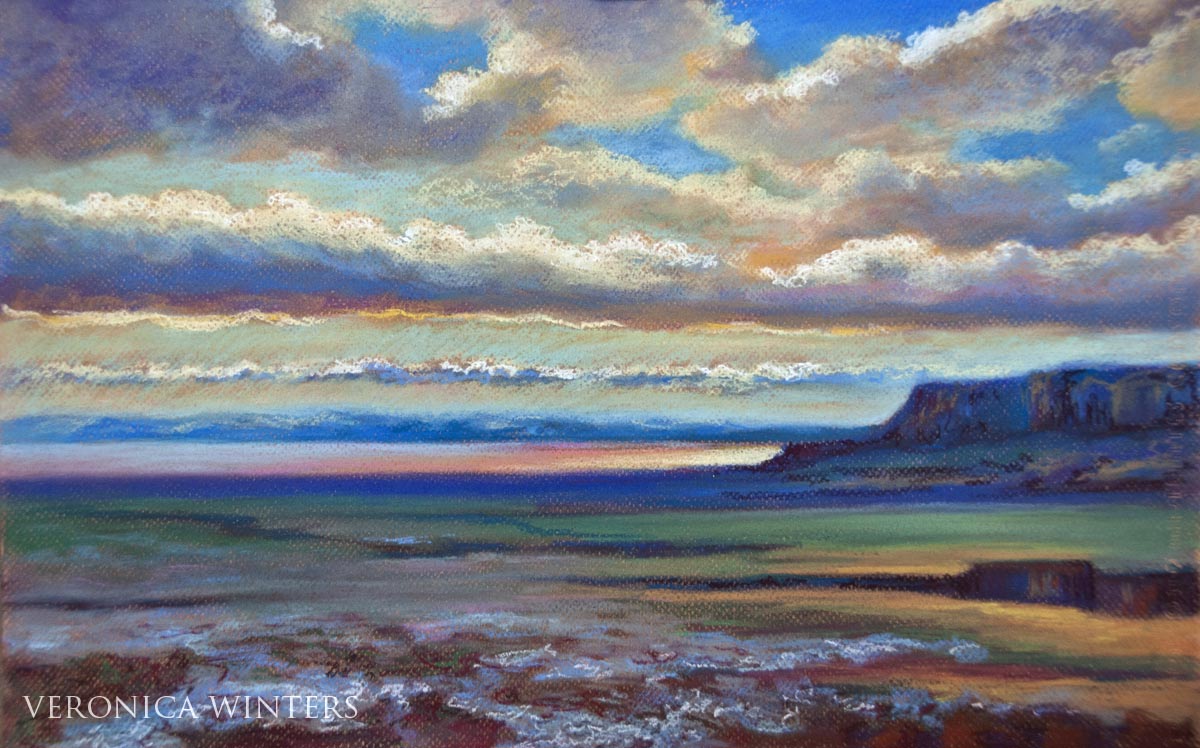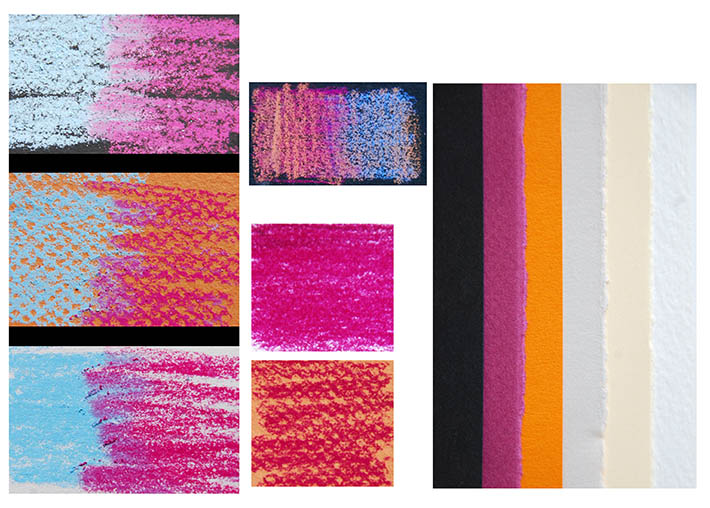While artists have used soft pastels since the 17th century, the medium is a popular choice of many modern artists who like the spontaneity and action of quick painting in full color on paper. There are two types of pastels: oil pastels and soft pastels. Here, we will only cover how to use soft pastels.

Soft pastels properties
Soft pastels come in stick or pencil forms. They contain less binder and more pigment, which gives them their soft, velvety texture and the richness of color. Unlike the hard pastels, they have a weak core and thus are prone to breakage.
Some popular brands for professional-grade soft pastels include Rembrandt, Faber-Castell, Richeson, Sennelier, Unison and some others.

Beware, soft pastels emit lots of dust, which is hazardous if inhaled. Use proper ventilation and gloves when drawing with them. As an additional measure, wrap them in an aluminum foil to prevent unnecessary smudging in the box and to keep your fingers clean, if you work without gloves.
Color application and blending
Pastels are normally applied in successive layers to create the depth and to achieve the richness of a color. Due to the similarity in texture, pastel sticks, wine charcoal, and some pastel pencils or white charcoal can be used in a combination with soft pastels for clarity and detail.
When working with just pastels, the applied pigment can be pushed and blended with a paper towel, a tortillon, a rag or a finger. They can be dragged flat on their sides or pointed for various shading, as demonstrated in these four images:

1. In the first image, one color (purple) is applied over the other (red) without blending.
2. The second image shows the same colors blended.
3. The third image shows a dark color dragged on its side over the blended yellow.
4. The last image shows different colors crosshatched one atop another using sharper point.
How to layer brilliant colors
Layering and blending pastels can be tricky because excessive smudging and graying of a color are common. One of the best strategies to overcome the grayness is to work from dark to light and from general to specific.
Layer 1:
For example, shade the first layer with dark (often complementary colors) and in broad strokes, with the goal of creating the shapes and defining the light-and-dark patterns. After blending this layer, spray it with a workable fixative.
Layer 2:
The second layer involves shading with the “normal” colors that everyone sees defined as the local colors — the red of a tomato or the green of an apple. In this stage, the application should show some definite, directional strokes. Only partial blending is necessary at this step, blending a few edges or colors. Usually the first layer partially shows through the next. Spray this layer again with a workable fixative.
Layer 3:
Add detail, define edges and bring important elements into focus in the third and final layer. No blending and achieving maximum texture is the goal at the final step. Because sprays change the color in pastel paintings, many artists choose not to spray a painting’s top layer. If you chose to protect the final layer from smudging, however, use a final fixative intended for dry media.
Surfaces for soft pastels painting
Choosing surface color
Most artists draw in soft pastels on toned paper. Colored papers not only speed up the drawing time, but also give rise to unexpected color combinations. When choosing the paper’s color, pay attention to its tone or value rather than the actual color. A good place to start is to buy the middle-toned steel gray or felt gray. The same hues applied over various colored papers produce very different results, which requires experimentation.
Choosing surface texture
Choose papers with more “tooth” or texture in their surface. Some have the tooth on one side only, like Canson Mi-Teintes pastel paper. It’s also quite heavy (98 lb.) and large, which is ideal for pastel drawings.
A relatively new invention, the archival substitute for paper is durable Ampersand pastelbord. The panels thick, lightly sanded surface comes in multiple colors and standard sizes. The panels accept many layers of soft pastels, giving amazing permanent results to professional artists.
Comparing colors and textures

Above, pastels are applied on smooth and textured papers like Strathmore drawing paper and textured Mi-Teintes pastel paper. You can see how the same two colors give different results on black, tanned and light gray papers.

Would love to see a class covering soft pastels.
Please post a similar article covering oil pastels.
This is great. Make a video!!!!!